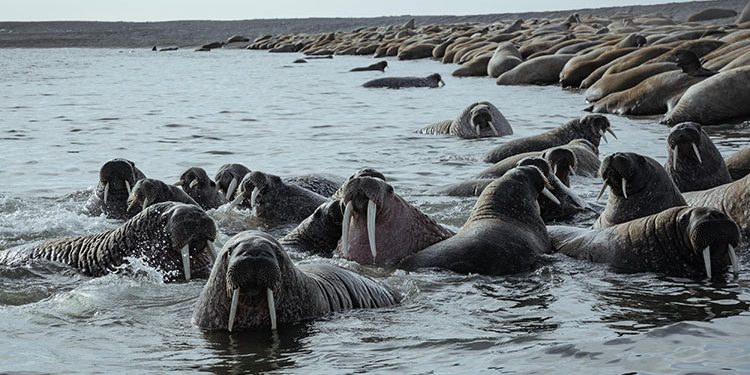Gazprom Neft: Carries Out Large-scale Environmental Studies in the Barents Sea
Gazprom Neft carried out environmental monitoring to assess the ecosystem of the Barents Sea in the area of the Prirazlomnoye field. Specialists of the Center for Marine Research, Moscow State University. MV Lomonosov Moscow State University took samples of atmospheric air, sea water and bottom sediments, and also analyzed biological processes in the water area. Also, along the entire route of specialized scientific vessels, researchers observed marine mammals and birds.
State reserves and reserves with unique flora and fauna are located not far from the Prirazlomnoye field. The territories under constant environmental control of the company include the islands of the Nenetsky reserve. On the islands of Vaigach, Matveev, Dolgiy and Golets, the researchers conducted observations of the walrus population as part of environmental monitoring. Using drones and satellite images, scientists estimated the population of the rookeries of these marine mammals, and changes in the population and life cycle of animals were recorded using autonomous camera traps. Also on the islands, ecologists took soil samples, took samples of plankton from coastal waters and made a description of the local vegetation.
“To ensure environmental safety in the region where the Prirazlomnaya platform operates, a whole range of effective environmental technologies is involved, we strictly comply with strict industrial and environmental safety requirements. Continuous environmental monitoring is also one of the most important elements of our environmental program. All studies conducted over the past decade indicate the continued well-being of the region’s ecosystem, which confirms the effectiveness of our approach to ensuring safe work in the Arctic. ”Igor Rustamov General Director of Gazprom Neft Shelf:
“The Atlantic walrus is one of the most sensitive species of marine mammals, its condition is an important indicator of the sustainable condition of the ecosystem of the area. Our observations record in 2021, as in previous years of constant monitoring, comparable dynamics of all key indicators. “Margarita Kiryushina Chief Specialist of the Ecology Department of the Center for Marine Research, Lomonosov Moscow State University
“Our reserve has been cooperating with scientific institutes of Russia for many years, providing them with the opportunity to observe the nature of the Arctic in a protected area. The information they receive is very important for nature conservation. Only on the basis of many years of scientific research and their analysis can we plan and implement programs aimed at ensuring the well-being of all species inhabiting the reserve. “Stanislav Zolotoy director of the Nenetsky nature reserve

















